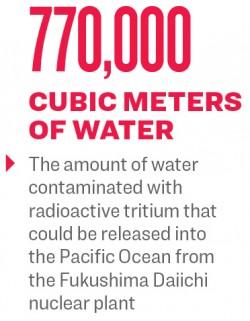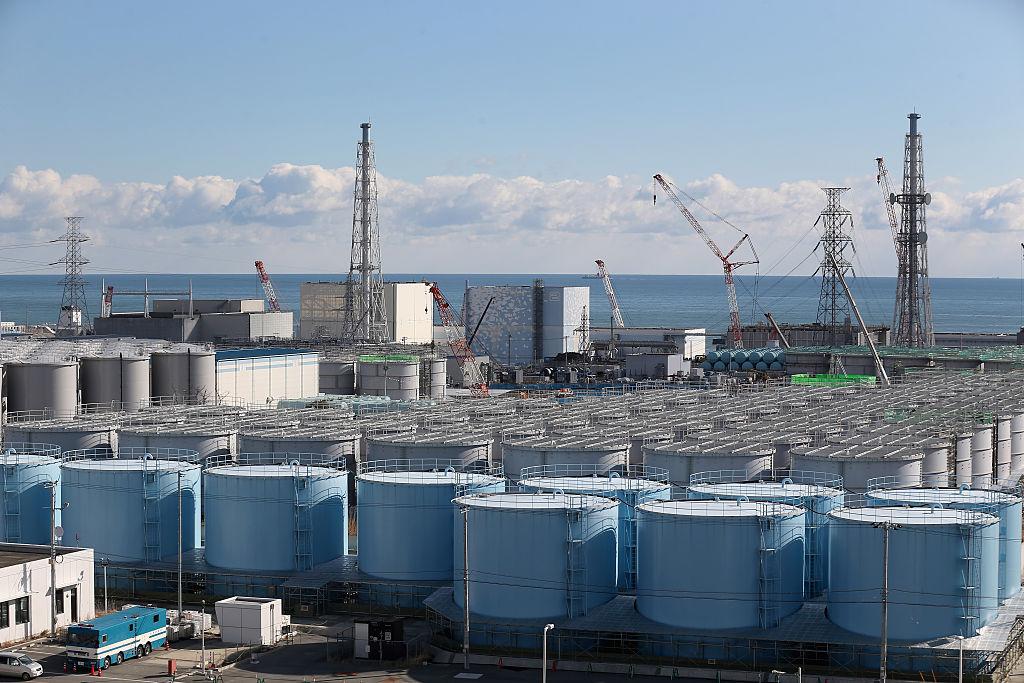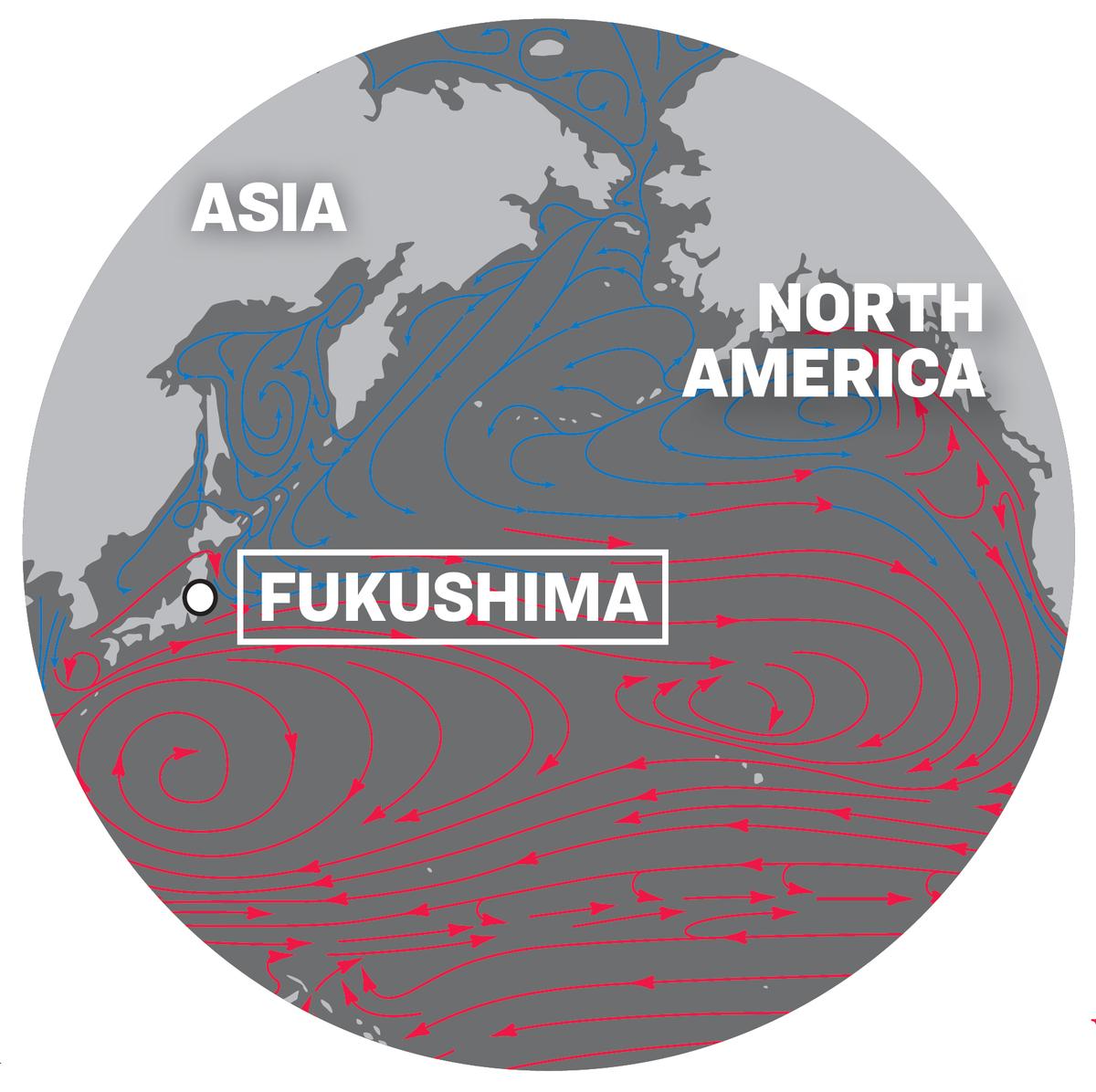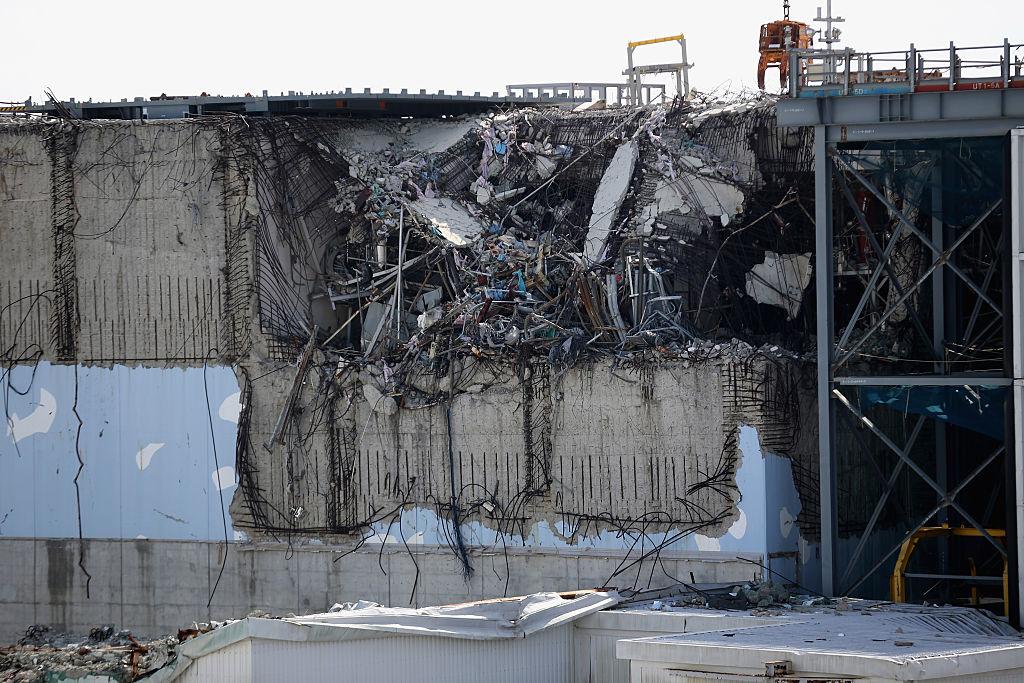Tokyo Electric Power Company, the operator of the Fukushima Daiichi nuclear plant, says it may dump as much as 770,000 cubic meters of water contaminated with the radioactive tritium into the Pacific Ocean, as part of its cleanup efforts following the 2011 tsunami. The announcement has stirred up controversy, yet other, lesser known nuclear facilities around the world have already been releasing tritium into the ocean and the environment.
“After dilution, tritium is released into the ocean, not only from the nuclear power plants but also from the reprocessing plants in the world already,” said nuclear engineer Tadahiro Katsuta of Meiji University, via email.
It is hard to remove tritium from nuclear plant effluent. It is a radioactive isotope of hydrogen, and like hydrogen, it can bond with oxygen to make water—tritiated water. Because it is part of the water, it isn’t as easy to remove as other contaminants.
Alternatives to dumping this tritiated water in the ocean include storing it underground or vaporizing it into the atmosphere. But these alternatives have no full-scale research to back them up, nor are they practical with this much tritiated water, said Katsuta.

The costs of these alternatives would be too great, adding to an already phenomenally expensive cleanup, he said. The Japanese government estimated last year that disaster-related costs will reach $188 billion, following the 2011 earthquake and tsunami that caused the meltdown of three reactors at the power station.
Because it is so difficult to remove tritium, most nuclear plants release tritiated water into the environment. The releases are controlled, as it would be at Fukushima, to allow the tritium to diffuse in the environment gradually, in concentrations considered safe.

In the United States, the Environmental Protection Agency (EPA) sets a maximum contaminant level for tritium at 20,000 picoCuries per liter (pCi/L). To put that number in perspective, the amount of radiation a person would be exposed to from drinking water contaminated at this level for one year is comparable to the radiation exposure of a three- or four-hour flight.
A person who drinks water contaminated with three times this much tritium has an estimated 1 in 1.25 million chance of getting fatal cancer as a result, according to the U.S. Nuclear Regulatory Commission.

Tritium is considered a relatively harmless radioactive substance. The World Health Organization sets its maximum concentration level at about 13 times higher than the EPA’s recommendation. Our bodies are constantly exposed to radiation, the majority of which comes from natural sources, such as cosmic radiation from the sun and stars.
“Doses from tritium and nuclear power plant effluents are a negligible contribution to the background radiation to which people are normally exposed, and they account for less than 0.1 percent of the total background dose,” reports the U.S. Nuclear Regulatory Commission.
Other, more hazardous radioactive substances, such as strontium and cesium, have been removed from the Fukushima wastewater. But the filtration system used to remove these substances is not 100 percent effective, explained Ken Buesseler, a senior scientist at Woods Hole Oceanographic Institution who has closely followed the Fukushima cleanup and the disaster’s impacts on the ocean.

“There will be residual radioactivity left in the tanks that is not from tritium but dozens of other radionuclides. I’ve not seen a good, certainly not independent, assessment of these other radionuclides. With such a big volume and potential release, I'd want to know what else remains in the tank water, not just tritium,” he said via email.
The International Atomic Energy Agency (IAEA) has suggested comprehensive testing and stakeholder collaboration, also taking into account these residual radionuclides mentioned by Buesseler, before a decision is made on Fukushima’s tritium disposal.
Local fishermen and others voiced concerns in July after the Japan Times reported that Takashi Kawamura, chairman of the Tokyo Electric Power Company (Tepco), said the company had already decided to dump tritium in the ocean.
Tepco spokesperson Shinichi Nakakuki told The Epoch Times via email that releasing tritiated water into the ocean will not have an impact, according to scientific research. But he said Kawamura’s comments were not meant as the final word on Tepco’s plans for the water. The company will continue conversations with the government and stakeholders before deciding on a solution.






